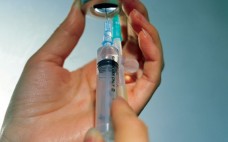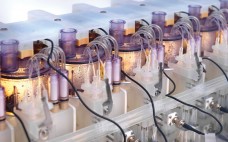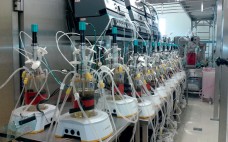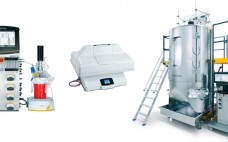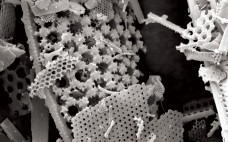What’s on the minds of analytical and quality laboratories in 2014? They want to stay abreast of both emerging analytical tools for biotherapeutics and increasing quality expectations. They need to optimize their analytical strategies and reduce quality risk across every product’s life cycle. They’re focusing on physiochemical characterization methods, impurities and product variants, biosimilars and complex glycoproteins, high-throughput methods for predicting stability and developability of early stage products — and of course, quality risk management. Characterization, Structure, and Function: As…
2014
Formulation and Delivery
What’s on the minds of biopharmaceutical formulators in 2014? They want to apply innovative technologies and phase-appropriate strategies for preformulation and formulation development of monoclonal antibodies (MAbs), next-generation biologics, non-MAb protein therapeutics, vaccines, biologics, and other product modalities. They need to be aware of the latest drug delivery options. High-throughput analytical methods are helping in preformulation and liability assessments. Stability testing and physiochemical characterization remain key. Product Characterization: As is often the case, analytical and formulation laboratories have a lot…
Poster Presentations
Cell Culture and Upstream Processing Lewis Ho (Bioreactor Sciences) Case Studies of hERG Membrane Protein and Japanese Encephalitis Virus Production Using a New, Innovative, Moving-Bed Bioreactor Human erythroblast-transformation– related gene (ERG) membrane protein has gained great interest as a target for drug discovery. A doubled expression of the hERG gene was induced under nutrient limitations. The protein is membrane bound, so whole-cell recovery from the carriers is required. HEK293 cells were used. A Japanese encephalitis virus (JEV) vaccine has long…
From the Editor
This special issue has come about through a long collaborative process with our contacts at Sartorius Stedim Biotech in Göttingen, Germany. It is the third such sponsored issue that BPI has published over the years with the company and the first one that we have produced in-house. We could not be happier with the results. The aim here is to highlight technologies and responses to key industry challenges rather than focus over much on Sartorius itself. But the company’s long-standing…
Automated Mini Bioreactor Technology for Microbial and Mammalian Cell Culture: Flexible Strategy to Optimize Early Process Development of Biologics and Vaccines
The use of mammalian and microbial cells in the production of biologics and vaccines is well established, and the majority of the top 10 drugs are now manufactured in this way. There is a significant and growing pipeline of new biologics (1), which in combination with increased pressure on cost reduction and generic competition from biosimilars (2), means that many biopharmaceutical companies are looking for ways to improve productivity in their development laboratories to ensure that upstream processes are efficient…
Single-Use, Stirred-Tank Bioreactors: Efficient Tools for Process Development and Characterization
During the past decade, single-use bioreactors have become widely accepted as an alternative to conventional stainless steel or glass bioreactors for clinical manufacturing and process development. In the biopharmaceutical industry, glass bioreactors are used mainly for process development and optimization, but also scale-down models for process characterization. So it is of significant importance that such vessels replicate the design of production-scale bioreactors for both reusable and single-use applications. Stirred-tank bioreactors with 2-L, 5-L, and 10-L working volumes have proven to…
Design of Experiments with Small-Scale Bioreactor Systems: Efficient Bioprocess Development and Optimization
Design of experiments (DoE) is one of the most valuable techniques for organized and efficient planning, execution, and statistical evaluation of experiments. Although a DoE investigation can be completed using several runs in one bioreactor, small-scale bioreactor systems designed for parallel operation (such as the ambr15 or ambr250 systems) provide the optimal basis to economically realize a series of experiments. Because of the multitude of interdependent parameters involved in applications such as cell line development, culture media screening, and the…
Superior Scalability of Single-Use Bioreactors
During the past several years, single-use bioreactors have been gradually established in modern biopharmaceutical processes (1, 2). This adoption is directly linked to their unique ability to enhance flexibility and reduce investment and operational costs. Furthermore, production output can be increased, and time to market is shortened (3). Today a wide variety of single-use bioreactors exists for the cultivation of mammalian and insect cells (4), whereas only limited solutions are available for microbial cultures (5). Typically, processes are established and…
Integrated Optical Single-Use Sensors: Moving Toward a True Single-Use Factory for Biologics and Vaccine Production
Through the past decade, single-use bioreactors for culturing mammalian and insect cells have been widely adopted in preclinical, clinical, and production-scale biopharmaceutical facilities (1, 2). With such bioreactors in operation, monitoring and control of process parameters is vital for ensuring critical quality attributes (CQAs) of biologicals or vaccines are met for production of a safe product. Traditionally, bag-based and bench-top vessels have been fitted with conventional pH and dissolved oxygen (DO) probes similar to those used in stainless steel or…
Diatomaceous Earth Filtration: Innovative Single-Use Concepts for Clarification of High-Density Mammalian Cell Cultures
In the past decade, biopharmaceutical manufacturers have demonstrated major improvements in monoclonal antibody (MAb) production, exhibiting product titers frequently in the range of 5–10 g/L using standard fed-batch mammalian cell cultures (1, 2). Increased product yields allow for smaller-scale production vessels. With 2,000-L single-use bioreactors already commercially available, single-use manufacturing of biomolecules becomes more and more an option. Other recent developments in the biopharmaceutical industry — e.g., drugs for smaller indications and more potent drugs allowing for lower dosages —…


